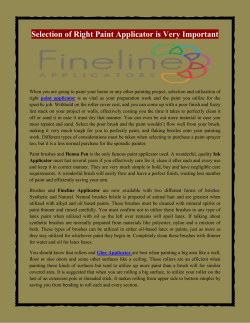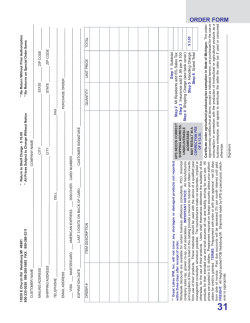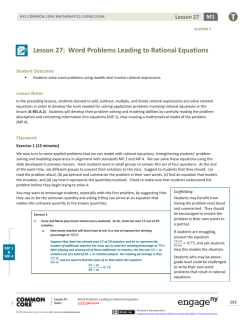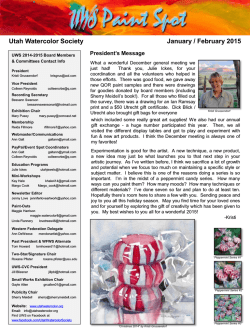
A Duie Pyle Offers Heated Delivery – The Paint Dealer
Heated Delivery H Randy Swart, COO of A. Duie Pyle Make sure your paint and your customers aren’t left out in the cold aving your paint delivered in a one-horse open sleigh, even for Christmas, will not yield outstanding results. Two horses might get it there faster, but if the sleigh is open your paint may arrive frozen, and you can’t just “let it go,” as the song suggests. By working with your supplier to find a delivery company that’s set up for cold weather transport, you might be able to keep that horse safely in the barn. If you’re shipping from by editor San Diego to El Paso, freezjerry rabushka ing paint isn’t a problem, but if you’re in a colder climate, a long drive in a cold truck can damage the paint and who knows that it might do to a painter’s hard work months down the line. Randy Swart is COO of A. Duie Pyle, a transportation company that specializes in cold weather shipping. Founded in 1924 in Coatesville, PA by Alexander Duie Pyle, this northeastern company knows a thing or two about moving product in the winter. Swart notes several of the dangers of shipping water-based paint in an unheated truck. If the paint freezes, it might not perform the same when it thaws out. “For example, one of the mold agents might be killed if it freezes,” he cautioned. “I think each paint from each paint company probably behaves differently, but it’s important to ask your suppliers if it’s OK or not for their paint to freeze.” There’s also an issue of timely delivery. If the shipping company isn’t equipped to ship in freezing temperatures, it will (hopefully) wait until the product can be delivered safely, however that will delay its arrival to your 16 TPD › 1.15 warm store. You can’t sell it if you don’t have it, aggravating your contractor, their customer...and all this aggravation will bring joy to the Home Depot down the street. Swart assures us that his company, accustomed to delivery in colder climes, is equipped to keep your paint warm for the journey. Who is responsible? Well, a bit of everyone, says Randy. If your paint is shipped with a notation that says protect from freezing, it also needs to say what that freezing point is, as some products freeze at different temperatures than others. Plus, if you’re in Maine and you’re getting paint from Florida, remember that your type of freezing might not be in the Floridian mindset. Coat weather in Florida is often confused with shorts weather in Maine. Therefore, make sure your shipper and supplier are aware of what the paint may face as it comes north. Your deal, as a dealer, is to make sure you can get your product in a timely and usable fashion. However, says Swart, remember that it costs a bit more to heat your paint, so also make sure you can be there when the paint comes in. “It’s expensive to hold the freight on a heated trailer,” he points out. “Make sure you are ready and eager for it to get there to prevent it from being in transport any longer than it needs to be.” Just remember, paint has to get from where it comes from to where it’s going. This may sound like a big “duh,” but in shipping that’s one of the most important factors to consider. If your supplier is responsible for find a shipper too booked up to handle a last minute call. “Our capacity is set for our normal customer base, and when our competitors aren’t picking it up that jams our capacity and we can’t help everybody,” he explains. Plan ahead, he suggests, and plan for winter to be a problem. Sometimes the environment isn’t so friendly to environmentally friendly products. It really is your problem shipping, make sure it knows your conditions. If you’re in a place that doesn’t normally freeze, like Jacksonville, Florida, alert your supplier to the unusual cold. Plus, someone should make sure the shipping company has the capacity to handle what’s thrown its way. Heat the Fleet “We have a heated fleet of trailers,” says Swart. “We have a big heated unit on the front of our trailers and we have 500 units. There are different varieties of protection. You can have one that puts heat into the trailer—generators deliver the temperature around 90 degrees but when it gets back to the back of the trailer it keeps it to 55 or 60. We specialize in keeping product above 32, but the colder it is outside the harder it is to do. We need something that will function successfully in the conditions we operate in.” A truck going 60 miles an hour in minus 30 can be a challenging ride if the trailer has air leaks and the paint needs to be kept from freezing. As with any winter plans, prepare for the unexpected, because either the weather or the traffic can throw some hurdles along the way. A six hour traffic jam on I-95 and you’ve got problems. Some folks will try a blanket proposal: if the product is warm when it’s loaded, covering it with a blanket can keep it warm enough to make it to its destination unscathed. Or…not. “That assumes the product is warm enough when the shipper ships it, and that if you put on a blanket it will retain the warmth for delivery, and if everything goes perfectly, it won’t freeze into a five gallon block of ice,” says Swart. That’s a lot of assuming. “If it’s a12-hour ride and your paint is moving the entire time and originally was shipped at 60 or 70 degrees, that’s a hope strategy. Plus, in the winter, if you have big snowstorm or something occurs that delays the supply unexpectedly, that puts you into a place where you can a only ship on certain days,” he continued. “You can’t ship on a Friday because the product will sit Saturday and Sunday and it can’t keep warm under those conditions.” If it’s too cold and conditions aren’t good, a savvy shipping company is not going to take 500 gallons of paint on a journey it might not survive. It’s the right decision, but you still won’t have paint. In this case, Swart notes, everyone’s going to call a company like Pyle to pick up the slack, but without reserving in advance you might It’s your store, so use your clout. “Use a carrier in your area that you know has the services, and through your account manager ask your supplier if they can ship it with that company,” Swart recommends. “Tell your supplier that they have heated units and docks so if something happens they’ll protect your paint. Take a bit more control and don’t think it’s somebody else’s problem.” If your paint froze, you have to open it and test it and see if it’s good or bad, then send it back if it’s bad. The supplier has to reship, and it loses a batch of what used to be perfectly good paint. “You don’t have your paint so you can’t sell it,” Randy reminds us. “Nobody wins.” Back in the day, oil based paint could take a bit more abuse, Swart recalls. “More product, in order to meet environmental regulations, has gone from caustic to water base and things more environmentally friendly. Those products are more susceptible to the environment.” aduiepyle.com tpd Imprinted Yardsticks retail for about $ ea. 1 Placing this attractive display near check out could be one of the biggest sellers in your store. Everyone needs a yardstick! 1-800-858-8589 www.americanpaintpaddle.com www.paintdealer.com 17
© Copyright 2026





